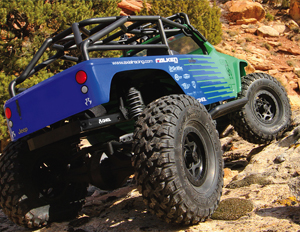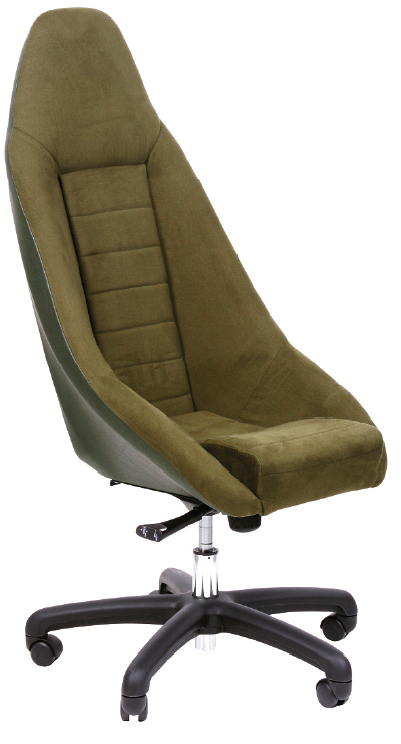 When it comes to helping your 4×4 stand out from the crowd, a personalised number plate can be just the ticket. It makes a statement about you and your interests, or reflects some feature of the car. It’s straightforward to buy a plate, and there are plenty of options available. We look at how to go about it
When it comes to helping your 4×4 stand out from the crowd, a personalised number plate can be just the ticket. It makes a statement about you and your interests, or reflects some feature of the car. It’s straightforward to buy a plate, and there are plenty of options available. We look at how to go about it
Drive behind a car with the registration number K1 1LTS and you can surmise immediately that the owner is a tartan-loving Scot. Similarly, 1 MUT, probably indicates that you’re driving behind a canine enthusiast. That’s the beauty of a personalised plate – it enables you to communicate in a pithy, often humorous way to the world around you. And that means you can express your individuality, as well as giving your car some standout appeal.
Of course, as a 4×4 owner, you’ve already got a vehicle that is a bit different from the norm. But it’s worth enhancing this characteristic, and personalised number plates are a popular way of doing that. What is more, private registrations can be surprisingly cost-effective to buy.
A R4 NGE of options
 There is a wide selection of private registration numbers available. They can be purchased directly from the DVLA, which holds regular auctions both online and in person. Registration numbers can also be bought from private sellers, who make their living by trading the plates and often have access to a staggering array of combinations.
There is a wide selection of private registration numbers available. They can be purchased directly from the DVLA, which holds regular auctions both online and in person. Registration numbers can also be bought from private sellers, who make their living by trading the plates and often have access to a staggering array of combinations.
When it comes to deciding on the style of plate that’s right for you, there are five formats available:
• Current style registrations: these follow the format of the latest registrations – i.e. two letters (related to the place of registration), a two-digit age signifier, and three random letters. So, for example, a car registered in Kent in January 2002 might have the following registration number: GA02 UFO.
• Prefix registrations: these are the type of number plate that immediately preceded the current setup, and ended with the Y reg in 2001. Prefix plates consist of an age-identifying letter at the start, followed by one to three numbers, and three more letters. Thus, a car registered in May 1986 might bear a number plate like this: C309 DAD.
• Suffix registrations: these were used before the introduction of prefix number plates in 1983, and follow the same format, but in reverse. Thus, they begin with three letters, then feature three numbers, before ending with a letter that relates to the year of registration. Thus, a vehicle registered in June 1974 might have a registration number like this: BAR 230M.
• Irish registrations: these feature two or three letters at the start, which always contain either a ‘Z’ or an ‘I’, followed by up to four numbers. They are not age-related, and are often among the cheapest personalised plates available. An example of an Irish registration number would be: IDZ 7435.
• Dateless registrations: these are usually the most expensive type of private registration number, because they tend to be the most desirable. They do not feature an age identifier, and consist of either a letter combination followed by a number combination (e.g. MUM 4), or a number combination followed by a letter combination (e.g. 11 DOC). The former tend to be even more desirable than the latter, because the letters, which are the personalised bit of a plate, come first.
Follow the RUL 35
So, what are the rules governing your choice of personalised registration number? The basic demand is that you do not attempt to make a vehicle look younger than it is by putting a newer plate on it. So you can’t put a 52 plate on a car that was registered in 1998, or a prefix B-reg on a car made in 1970.
You can, however, make your car look older than it is, which means that any registration mark that was made prior to the initial registration of your vehicle is fair game. For most people, that means a wide choice of plates is available – and there is usually a very high chance of finding a combination of letters and numbers that works for you.
Of course, when it comes to dateless and Irish registration numbers, the options are far wider. Precisely because these plates don’t feature any form of age identification, they can be attached to pretty much any vehicle.
Deal with the P4 PER
 As you’d expect, there is a fair amount of paperwork involved in transferring a personalised registration number to your car. Some traders take care of all of this for you, and, as a minimum, the DVLA – like many others – includes the transfer fees in its pricing. This ensures there are no hidden costs after you have purchased your cherished plate.
As you’d expect, there is a fair amount of paperwork involved in transferring a personalised registration number to your car. Some traders take care of all of this for you, and, as a minimum, the DVLA – like many others – includes the transfer fees in its pricing. This ensures there are no hidden costs after you have purchased your cherished plate.
Once you buy a plate, you receive a Certificate of Entitlement (V750), which certifies your right to own that particular plate. This is one of the pieces of paper you’ll need if you have to take responsibility for assigning the number plate to your car – something that you have to do before the expiry date that is printed on the Certificate.
Should you wish to hold the number plate without putting it onto a vehicle, you can pay to extend the entitlement period, at a cost of £25 per year. This means that you own the registration mark, but are not currently displaying it on a vehicle.
Assuming you wish immediately to pin the number plate to your pride and joy, though, you’ll need to contact your local DVLA office, either by post or in person. Provide the office with a completed V750, as well as the documentation specified on the Certificate, and the mark will be assigned to a vehicle of your choice.
All that remains then is to get a plate made up by a registered number plate supplier, screw it into place, and get motoring in your newly personalised 4×4.
What if it’s NOT 4U?
Every so often, you’ll see a car advertised for sale that bears a cherished number plate. The seller might be intending to keep the plate, so they specify that the private plate is not included in the sale. This can seem daunting, and likely to generate unnecessary hassle – but the good news is that the process of transferring the plate and getting a new registration number should be down to the seller, not you.
It’s actually quite straightforward to transfer a vehicle’s registration number. You have to be the registered owner of the vehicle, and provide the DVLA with a completed application form, as well as the registration certificate, MOT certificate, and an £80 transfer fee. If all goes smoothly, you should in time receive a letter confirming the new registration number, as well as a form (called a V948) that authorises your purchase of new number plates, and a new tax disc bearing the updated registration details.
So whether you’re doing away with a private number plate, or fitting one to your off-roader in an effort to enhance its individuality, it’s very easy to complete the necessary procedures. And, once you’ve done so, you might just find that your car has a personality all of its own.
 To find out what personalised plates cost and where you can buy them buy a copy of the September issue of 4×4 Magazine
To find out what personalised plates cost and where you can buy them buy a copy of the September issue of 4×4 Magazine


